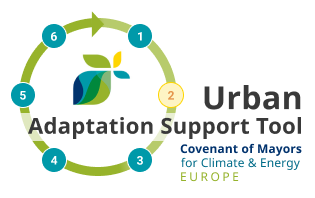
Assessing climate change risks and vulnerabilities
2.1 Recognizing past and present climate impacts
Analysing the past climate, especially learning more about the extreme weather events that have happened in the past, helps municipalities gain a better understanding of the risks they face currently and how their city might be affected by climate change impacts in the longer term when the presentrisks are intensified.
All EU member states have carried out risk and vulnerability assessments associated with climate change that include information about the past climate and extreme weather events. These assessments can be accessed through the Climate-ADAPT country pages.
Information about locally occurring past extreme weather events, such as heavy precipitation causing flooding, heatwaves or wildfires may be collected and maintained by national or regional civil protection or disaster management authorities, the national meteorological service or an environmental agency. Another way to identify the extreme weather events with the highest level of impacts in a given location is through analysis of the media reports (see LCLIP: Local Climate Impacts Profile). In the urban context, it is important to consult departments such as transport, public health or infrastructure, which may be able to provide information about the types of climate-related hazards that have affected their area the most.
Past natural disasters are also being documented in several international databases, such as EM_DAT or Desinventar. The insurance sector, in particular the re-insurance companies, also maintain hazard and risk databases, for example Swiss Re Institute provides Sigma and CatNet services and Munich Re maintains NatCatSERVICE. In Norway and Denmark, the insurance industry directly shares data with a number of municipalities.
See Chapter 2 of the EEA report Urban adaptation in Europe: how cities and towns respond to climate change for further information.
Reports
Relevant tile
- Urban adaptation in Europe: how cities and towns respond to climate change
- Urban adaptation to climate change in Europe 2016 - Transforming cities in a changing climate
- Attribution of mortality to the urban heat island during heatwaves in the West Midlands, UK
- Baltadapt Report #5: Climate Change Impacts on Infrastructure in the Baltic Sea Region
Case studies
Relevant tile
- Adapting to heat stress in Antwerp (Belgium) based on detailed thermal mapping
- Use of insurance loss data by local authorities in Norway
- Insurance company supporting adaptation action in small and medium size enterprises in Turin (Italy)
- Adaptation in winter tourism in Spessart (Germany)
- Public-private partnership for a new flood proof district in Bilbao, Spain
